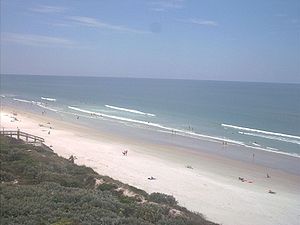I don’t know whether to call it coincidence or luck, but it
seems that every time I travel I end up sitting next to someone fascinating.
While I’m known for being forward and highly approachable, I have found that
simply initiating conversation with the people in the confined space around you
is easier than most people think. They’re usually just as bored and receptive
to chit chat as you are- they just aren’t as comfortable with being the first
to reach out. It’s dumbfounding to me the amount of people we share elevators
or ride on the train with daily without ever acknowledging one another’s
existence. Just think of how many simple “hellos” could have led to long-time
friendships, pen pals, or even romantic partners...
The last noteworthy encounter I had was with an eccentric man
in his late thirties named Eric. Eric and I were seatmates on an early flight
from Minnesota to Seattle. I was heading out west for an interview, and he was
on his way out of the country for a second bout of teaching English to kids
somewhere in a remote part of Asia. He was very personable, and quick to share
personal information about what he’d been up to while in the States. He had spent
the last month in northern Minnesota, first visiting his parents and then retreating
to a sauna in the middle of nowhere for some solitude and relaxation.
 He asked if I’d ever been to a sauna in the woods.
Admittedly, I had not. He raved about how wonderful the saunas in Minnesota
are, and implored that I go sometime and experience one myself. He offered to
let me skim through a book on Finnish saunas that someone had given him as a
departing gift. The photos were enticing and beautiful, featuring rustic, A-frame sauna log cabins and square pools surrounded by pure white snow. Apparently the
idea is to sit in the sauna for 15-20 minutes at a time, and then cool down in
the pool outside after. It sounded like a recipe for getting sick to me, but
also an experience. Once we landed, going to a sauna was officially on my
bucket list.
He asked if I’d ever been to a sauna in the woods.
Admittedly, I had not. He raved about how wonderful the saunas in Minnesota
are, and implored that I go sometime and experience one myself. He offered to
let me skim through a book on Finnish saunas that someone had given him as a
departing gift. The photos were enticing and beautiful, featuring rustic, A-frame sauna log cabins and square pools surrounded by pure white snow. Apparently the
idea is to sit in the sauna for 15-20 minutes at a time, and then cool down in
the pool outside after. It sounded like a recipe for getting sick to me, but
also an experience. Once we landed, going to a sauna was officially on my
bucket list.
Today I booked a weekend reservation for me and my friend
Chelsea at the Larsmont Cottages on the north shore of Lake Superior next month.
Something tells me it’s a lot less rustic than Eric would approve of, but he’d
at least be proud of me for going. There are plenty of opportunities to enjoy
the great outdoors by hiking, biking, skiing, and fishing… though I doubt I
will be able to convince Chelsea to fish. I’m sure we’ll make the most of the
heated indoor pool, outdoor Jacuzzi and of course…old fashioned wooden sauna! I’m looking forward to it. Maybe one day I’ll be able to share my sauna story
to a stranger en route.
I guess the point is that your mom probably told you not to talk to strangers, but
that was more applicable when you were five. Obviously, be cautious of weirdos.
But most people traveling are just like you- and chances are good they won’t bite. Worst case
scenario, you try to engage in a polite conversation and they don’t want to
talk. Best case scenario, you talk for whatever amount of time you have until your
destination, and they change your life. I promise you’ll learn something. You
may even be inspired to take a random trip somewhere new. The possible outcomes are
endless, but they’re only possible with "hellos."












